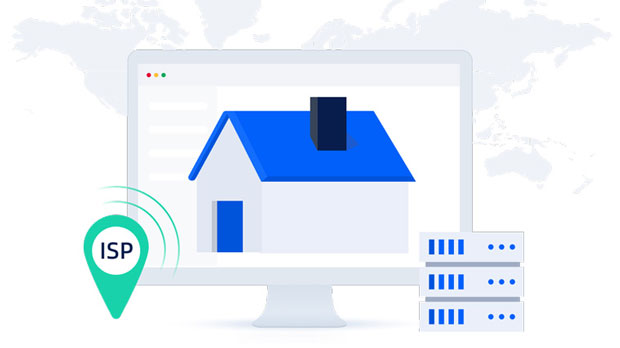When considering socks5 proxies, one of the most crucial factors for users is the pricing structure. SOCKS5 proxies are widely used for anonymity, security, and bypassing geographical restrictions, but they come with different pricing models based on various factors. In order to choose the best proxy service that fits your needs and budget, it's essential to assess multiple elements that influence the cost, including speed, reliability, location, and the number of simultaneous connections allowed. This guide will help you understand the key considerations for evaluating socks5 proxy pricing and how these factors can impact your decision-making process. Understanding SOCKS5 Proxies and Why Pricing VariesBefore diving into how to evaluate the pricing of SOCKS5 proxies, it's important to understand what makes SOCKS5 different from other types of proxies. SOCKS5 proxies are a versatile and secure method for routing internet traffic through a third-party server. Unlike HTTP or HTTPS proxies, SOCKS5 can handle any kind of traffic, including emails, file sharing, and P2P (peer-to-peer) services. This makes them popular for users who need a reliable and private connection, especially for high-bandwidth tasks or accessing restricted content. However, the flexibility and security features of SOCKS5 proxies often lead to varying pricing models, depending on the provider and service.The pricing of SOCKS5 proxies can be influenced by factors such as the server location, bandwidth limits, the level of anonymity provided, and the number of available IPs. These elements determine whether a proxy service is suited for personal use, business purposes, or high-traffic activities like web scraping or torrenting. In the following sections, we will analyze the key factors that can help you evaluate and understand the pricing of SOCKS5 proxies.Factors That Influence SOCKS5 Proxy Pricing1. Server Locations and Geographic CoverageOne of the most significant factors affecting the price of SOCKS5 proxies is the number of server locations available. The more diverse the proxy's geographic coverage, the higher the cost can be. This is because hosting multiple servers in different regions requires a larger infrastructure, which in turn increases operational costs. Some users might need proxies from specific countries to access geo-restricted content, while others may prioritize having a wider range of locations to ensure better anonymity and speed. Proxy services often charge more for access to premium locations like the US, UK, or European countries because they are in high demand. Less popular or emerging regions might offer cheaper proxy options. However, it is important to note that just because a proxy is located in a particular country doesn’t guarantee it will be faster or more reliable. Speed and stability are also influenced by factors like server load, network congestion, and overall service quality.2. Bandwidth and Speed RequirementsBandwidth and speed are fundamental factors that directly affect the cost of SOCKS5 proxies. If you are using proxies for high-bandwidth activities such as video streaming, large-scale web scraping, or online gaming, it is essential to evaluate how much bandwidth you will need. SOCKS5 proxies that offer unlimited bandwidth or high-speed connections typically come at a premium price.For users who require lower speeds or are only using the proxies for light browsing or testing purposes, more affordable options may be available. However, for mission-critical activities, such as scraping large amounts of data in a short period, prioritizing high-speed proxies can make a noticeable difference. As a result, prices can vary based on whether the service includes throttled or dedicated bandwidth.3. Anonymity and Security FeaturesAnonymity and security features are another crucial aspect when evaluating SOCKS5 proxy pricing. While SOCKS5 proxies do not encrypt traffic by default, many providers offer enhanced security features such as private IPs, authentication methods, and more. Enhanced anonymity typically requires more robust server configurations and monitoring, which increases the cost.Some users might only need a proxy for basic privacy, which may not necessitate the highest level of security. For example, if you only need to mask your IP address for non-sensitive browsing, a lower-cost proxy with minimal security features may be adequate. On the other hand, if you are working on highly sensitive tasks or wish to hide your identity more effectively, you should opt for proxies that offer more sophisticated encryption or have a reputation for providing high levels of security.4. Number of Simultaneous ConnectionsThe number of simultaneous connections or IP addresses allowed is another pricing determinant. If you are planning to use proxies for multiple devices, accounts, or large-scale operations, you'll likely need to purchase more connections. Proxy providers may offer tiered pricing plans based on the number of IPs or simultaneous connections. For example, personal users might only need one or two simultaneous connections, while businesses or advanced users might need a larger pool of IPs to ensure they are not blocked or flagged by the websites they are interacting with. The cost increases with the number of IPs, but having multiple IPs from different regions can help in maintaining anonymity and minimizing the risk of bans.5. Customer Support and MaintenanceAnother often overlooked aspect of proxy pricing is the level of customer support provided by the service. If you require immediate assistance or encounter technical issues with your SOCKS5 proxy, responsive customer service can be invaluable. More expensive services often come with enhanced customer support, offering 24/7 availability, fast response times, and specialized help for troubleshooting or configuration issues.Additionally, the reliability of the proxy network also matters. Services that offer premium support and regular maintenance checks tend to charge higher fees since they need to ensure that the proxies are functioning correctly and are consistently available. While basic support might suffice for casual users, those relying on proxies for business operations or intensive tasks should factor in the importance of reliable customer service.6. Subscription Models: Pay-Per-Use vs. Fixed PlansThe pricing model adopted by the proxy provider is another key factor. Some SOCKS5 proxy services offer pay-per-use pricing, where you only pay for the bandwidth or data usage you consume. This can be a cost-effective option for users who only need a proxy for occasional tasks. However, it can also lead to unpredictable costs if your usage fluctuates significantly.Alternatively, many providers offer fixed subscription plans, where you pay a set fee monthly or annually for a specific amount of bandwidth or number of IPs. Fixed plans are often more predictable and provide better value for regular users. However, it is essential to choose the right plan based on your anticipated usage to avoid paying for unused resources.Conclusion: Finding the Right SOCKS5 Proxy for Your NeedsEvaluating the pricing structure of SOCKS5 proxies requires a thorough understanding of your specific needs and the factors that influence the cost. Key considerations include server locations, bandwidth, speed, anonymity, the number of simultaneous connections, and the level of customer support provided. By weighing these factors against your intended use case, you can determine the best value for money.Ultimately, selecting the right SOCKS5 proxy should align with your objectives, whether it is for casual browsing, business applications, or high-bandwidth activities. Keep in mind that the lowest price may not always offer the best performance or security, and the most expensive option may come with features you do not need. By carefully assessing your requirements and comparing the features of different services, you can make an informed decision that balances both cost and quality.
Jan 09, 2025





















































